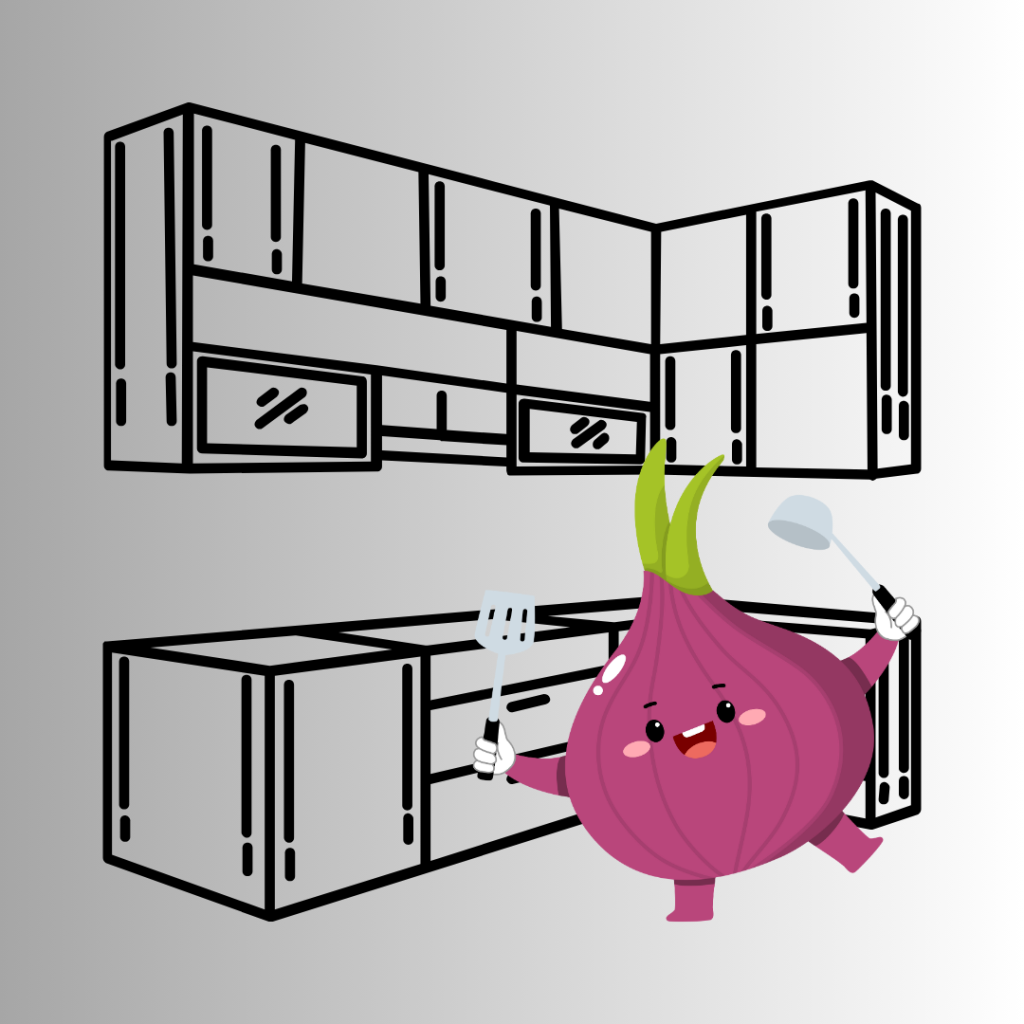
As an Amazon Associate, I earn from qualifying purchases. That means I earn commissions from my sponsored links or I make money when readers (you) purchase items through my links. Your purchase allows me to continue working as a stay-at-home dad who moonlights as a farmer and a musician. Needless to say, this post contains affiliate links.
During the height of the pandemic, my friends and I started a kagikit business. This highly savory food required lots of onions and shallots to make it taste good.
Every week, I’d head for the market and buy 10 kilos worth of red onions. Shallots were harder to come by but when we spotted them, we’d buy them all in bulk.
It came to a point where I started thinking, why not produce our own garlic and onions since we had the available land in Calinan.
The problem was, I didn’t know anything about it.
Wait… I think I got the idea to plant onions after I saw a Tiktok or FB reel featuring how easy it was to plant produce found in the supermarket at home. I’ll post it here if I ever find it.
Anyway, that was 5 years ago.
And what started as a simple experiment has continued to provide us with onion and garlic although we no longer serve kagikit.
Shame really… it tasted really good.
Adaptability to the Philippine Climate
Onions are quite the resilient crop, thriving in our tropical climate.
They prefer cooler temperatures during their early growth stages, making the months of November to February ideal for planting. Areas like Calinan in Davao and parts of Luzon have seen successful onion harvests during these months.
The Department of Agriculture also recommends short-day onion varieties for our latitude, ensuring bulb formation even with shorter daylight hours.
Varieties of Onion Suitable for the Philippines
Choosing the right variety is crucial. Here are some popular ones:
- Red Creole: Known for its pungent flavor and excellent storage capacity.
- Yellow Granex: A sweeter variety, often used in salads and sandwiches.
- Shallots (Multiplier Onions): Smaller bulbs with a milder taste, perfect for gourmet dishes.
These varieties have been tested and recommended by the Department of Agriculture for their adaptability and yield in Philippine conditions.
Land Preparation
Onions prefer well-drained, loamy soil with a pH between 6.0 and 7.0. Here’s how to prepare your land:
- Clear the area: Remove weeds and debris.
- Tilling: Plow the soil to a depth of 20-25 cm.
- Bed formation: Create raised beds about 1 meter wide to prevent waterlogging.
- Soil amendment: Incorporate compost or well-rotted manure to enhance fertility.
Fertilizer Application
Onions rely heavily on fertilizers. Here’s a recommended schedule:
- Basal application: Before planting, apply 10-20-20 NPK fertilizer at 2-3 bags per hectare.
- Side-dressing: Apply urea (46-0-0) at 1 bag per hectare 30 days after planting.
- Foliar feeding: Use a balanced foliar fertilizer every two weeks to promote healthy growth.
Always follow the manufacturer’s instructions and avoid over-fertilization, which can lead to bulb splitting.
Seed Preparation
Start with high-quality seeds from reputable suppliers. Here’s how to prepare them:
- Seedbed preparation: Create a fine-textured bed, free from clumps.
- Sowing: Sow seeds thinly in rows 10 cm apart.
- Mulching: Cover with a thin layer of rice hulls, coconut husks or straw to retain moisture.
- Watering: Keep the seedbed moist but not waterlogged.
Seedlings are ready for transplanting after 30-45 days, once they reach pencil-thickness.
Planting the Onion
Transplant seedlings in the late afternoon to reduce transplant shock. Follow these steps:
- Spacing: Plant seedlings 10-15 cm apart in rows spaced 20-25 cm apart.
- Depth: Plant at a depth of 2-3 cm, ensuring the base is just below the soil surface.
- Watering: Water immediately after transplanting to settle the soil.
Irrigation
Consistent moisture is key to bulb development. Here’s a guide:
- Frequency: Irrigate every 4-7 days, depending on soil moisture and weather conditions.
- Method: Use furrow or drip irrigation to minimize water contact with foliage.
- Final irrigation: Stop watering 2-3 weeks before harvest to allow bulbs to mature and dry.
Over-irrigation can lead to fungal diseases, so monitor soil moisture closely.
Cultivation and Weeding
Keep the field weed-free, especially during the first 6 weeks. Tips:
- Manual weeding: Use hand tools to remove weeds without disturbing onion roots.
- Mulching: Apply organic mulch to suppress weed growth and retain soil moisture.
- Herbicides: Use only as a last resort and follow label instructions carefully.
Pest Management
Common pests include thrips, armyworms, and onion maggots. Management strategies:
- Cultural control: Practice crop rotation and remove plant debris after harvest.
- Biological control: Encourage natural predators like ladybugs and lacewings.
- Chemical control: Use insecticides judiciously and rotate active ingredients to prevent resistance.
Regular field monitoring is essential to detect and manage pest outbreaks early.
Harvesting
Onions are ready for harvest when 50-70% of the tops have fallen over. Steps:
- Pulling: Gently lift bulbs from the soil.
- Curing: Leave onions in the field for 2-3 days to dry.
- Cleaning: Remove excess soil and trim tops to 2-3 cm.
- Storage: Store in a cool, dry place with good ventilation.
Proper curing and storage can extend shelf life up to 6 months.
Simple Onion Recipe: Ginisang Sibuyas
A quick and tasty dish to enjoy your harvest!
Ingredients:
- 2 large onions, sliced
- 2 cloves garlic, minced
- 2 tablespoons cooking oil
- Salt and pepper to taste
Instructions:
- Heat oil in a pan over medium heat.
- Sauté garlic until fragrant.
- Add onions and cook until translucent.
- Season with salt and pepper.
- Serve hot with rice.

Simple, yet flavorful!
TEOTWAWKI: No Crying When SHTF if You Have Onions in Your Survival Garden

In a TEOTWAWKI (The End of the World as We Know It) scenario, onions are invaluable because of these factors:
- Nutritional value: Rich in vitamins and antioxidants.
- Medicinal properties: Natural antibacterial and anti-inflammatory effects.
- Storage: Long shelf life when properly cured.
- Versatility: Enhances flavor in various dishes.
Including onions in your backyard farming or homesteading plans ensures a reliable food source during uncertain times.
Final Thoughts
Growing onions in the Philippines is both practical and rewarding.
The food recipes we have uses a lot of onions so I think it just makes sense that every household should have a ready supply of onions for their personal consumption. With proper planning and care, even an amateur farmer can achieve a bountiful harvest. Remember, agriculture is not just about food production; it’s about resilience, sustainability, and community.


